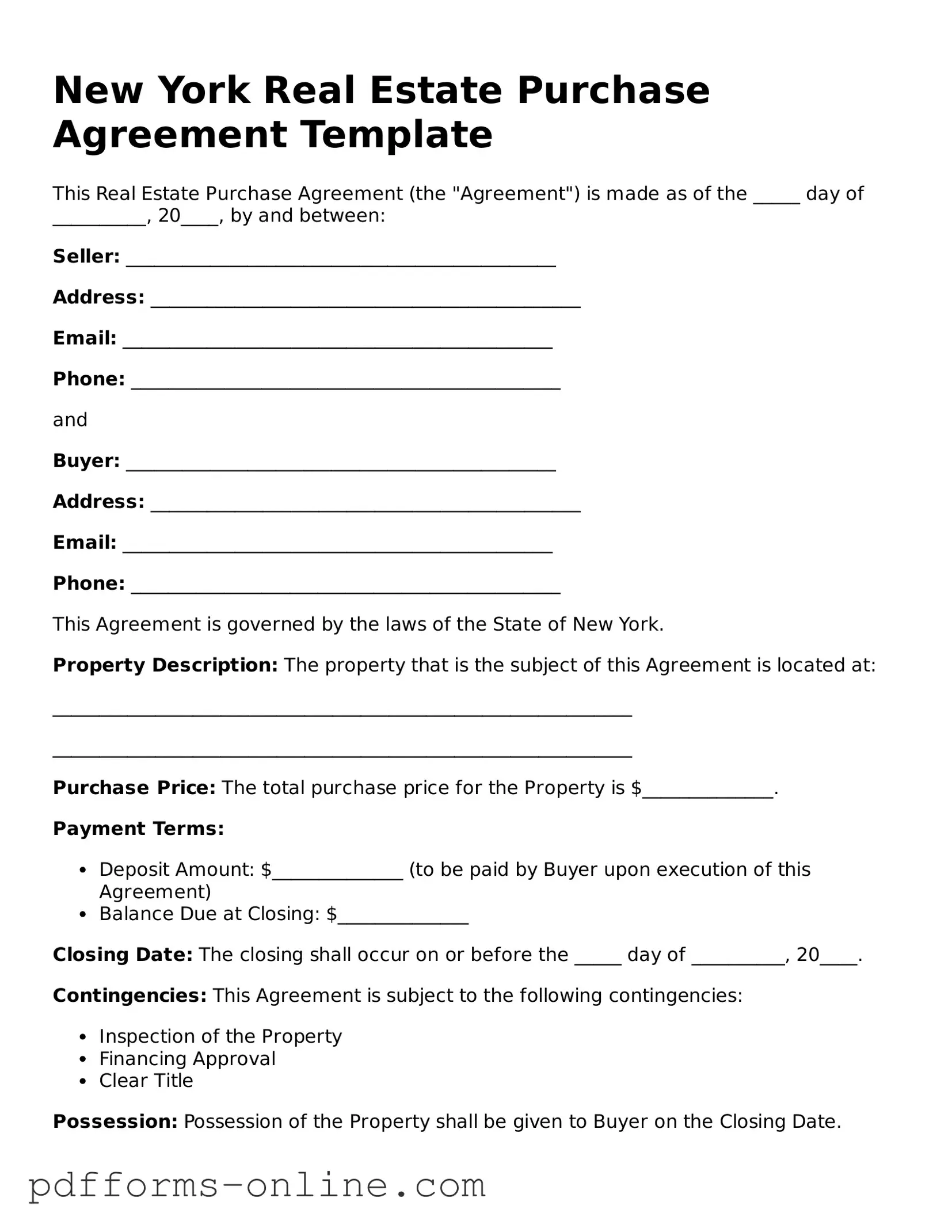New York Real Estate Purchase Agreement Template
This Real Estate Purchase Agreement (the "Agreement") is made as of the _____ day of __________, 20____, by and between:
Seller: ______________________________________________
Address: ______________________________________________
Email: ______________________________________________
Phone: ______________________________________________
and
Buyer: ______________________________________________
Address: ______________________________________________
Email: ______________________________________________
Phone: ______________________________________________
This Agreement is governed by the laws of the State of New York.
Property Description: The property that is the subject of this Agreement is located at:
______________________________________________________________
______________________________________________________________
Purchase Price: The total purchase price for the Property is $______________.
Payment Terms:
- Deposit Amount: $______________ (to be paid by Buyer upon execution of this Agreement)
- Balance Due at Closing: $______________
Closing Date: The closing shall occur on or before the _____ day of __________, 20____.
Contingencies: This Agreement is subject to the following contingencies:
- Inspection of the Property
- Financing Approval
- Clear Title
Possession: Possession of the Property shall be given to Buyer on the Closing Date.
Governing Law: This Agreement shall be governed by and construed in accordance with the laws of the State of New York.
Signatures:
IN WITNESS WHEREOF, the parties have executed this Agreement as of the date first written above.
Seller's Signature: ___________________________ Date: ___________
Buyer's Signature: ___________________________ Date: ___________
